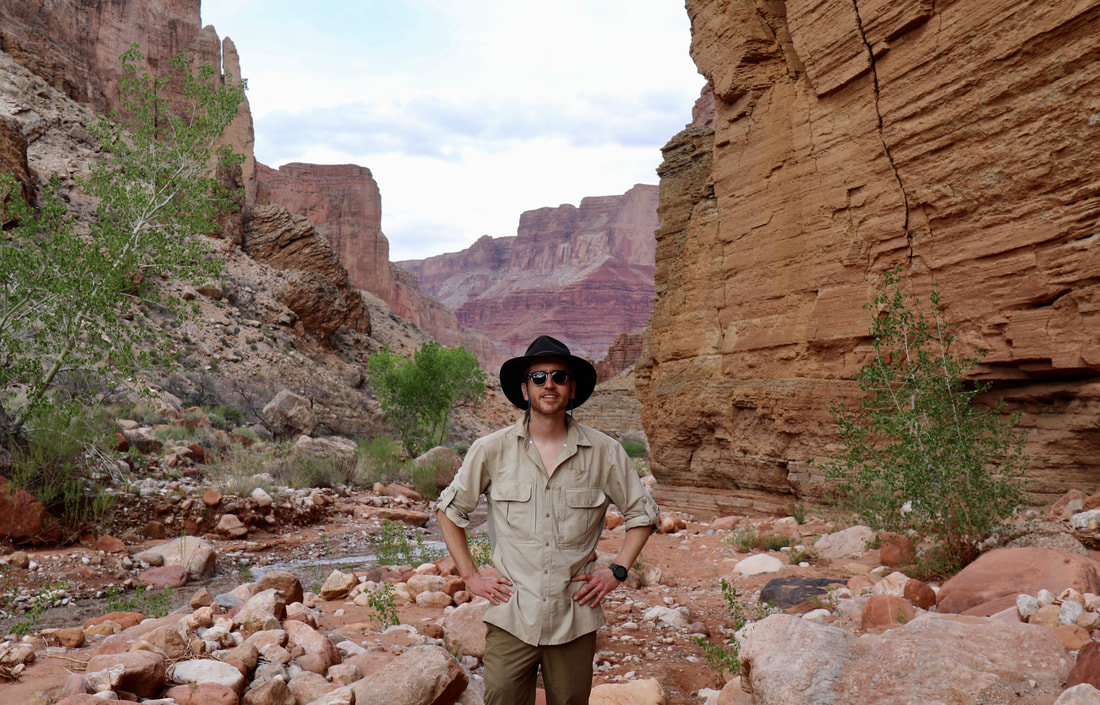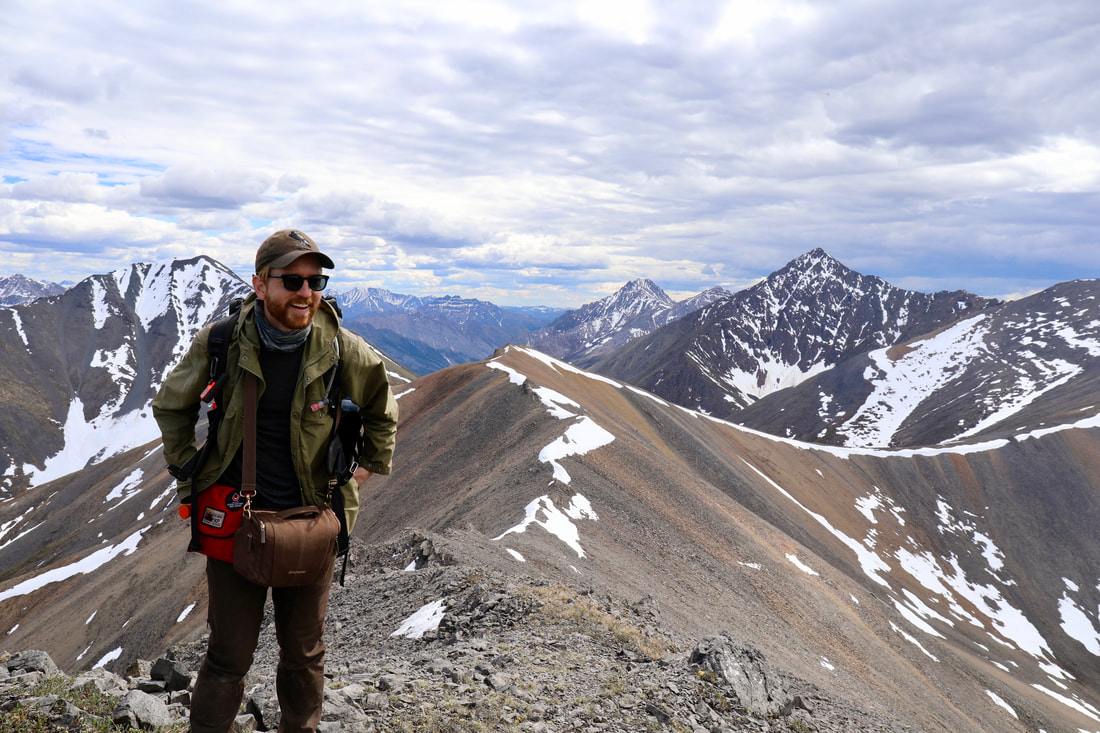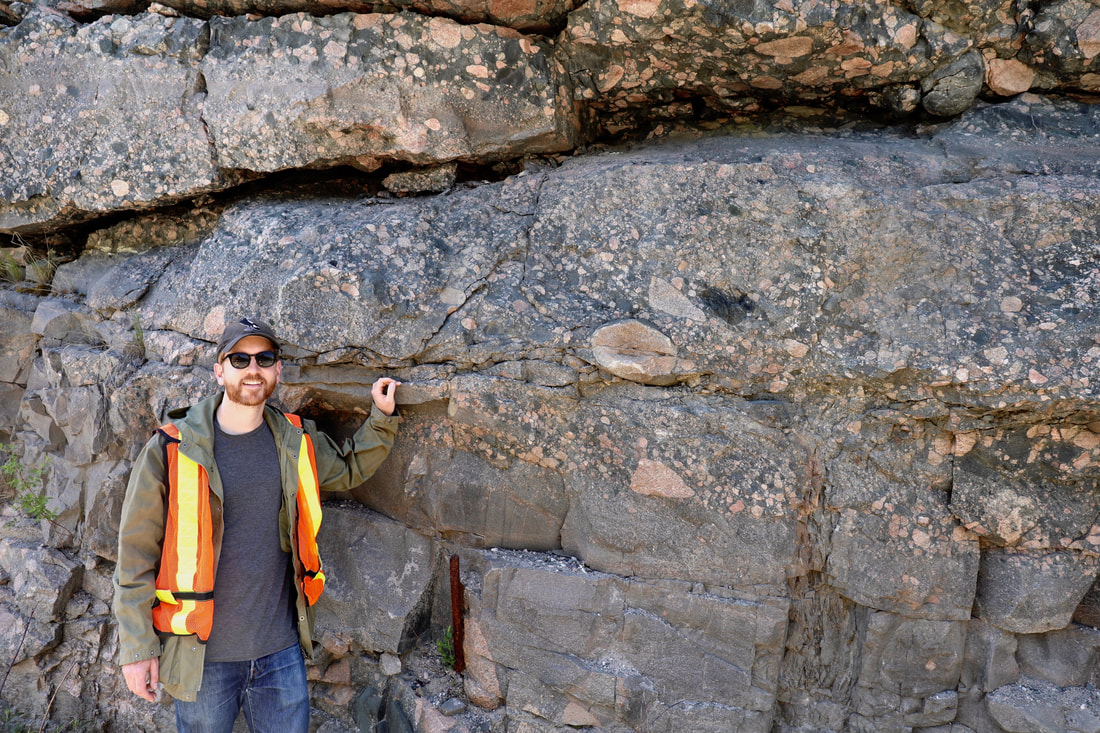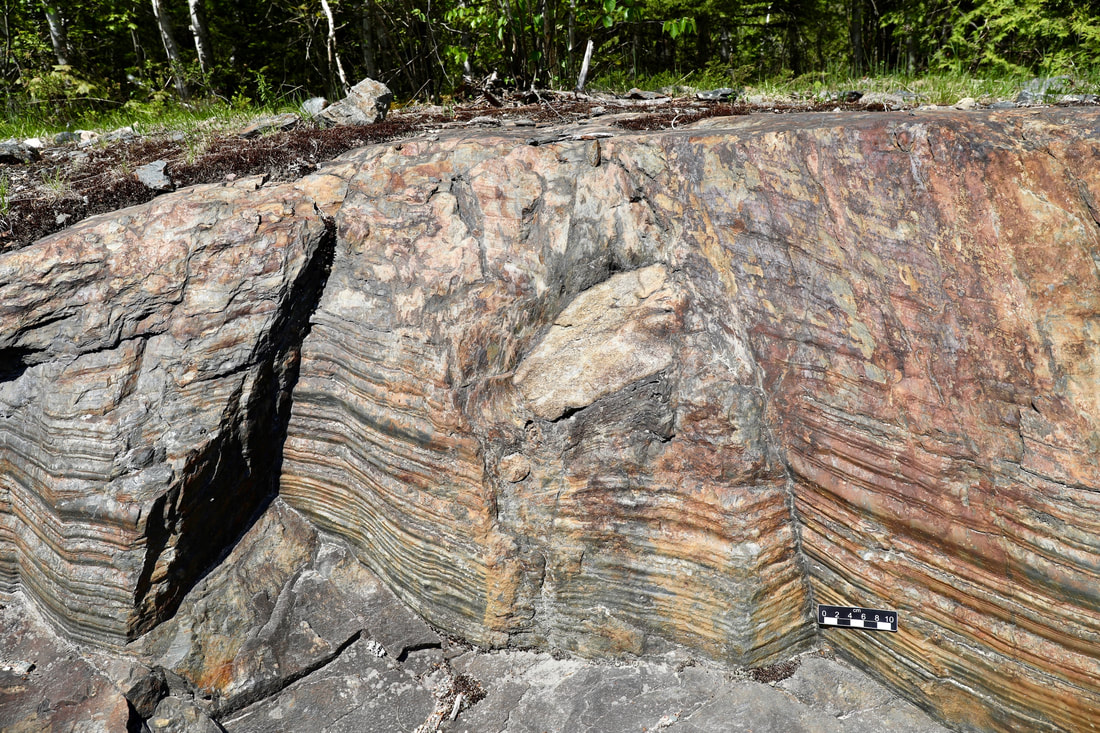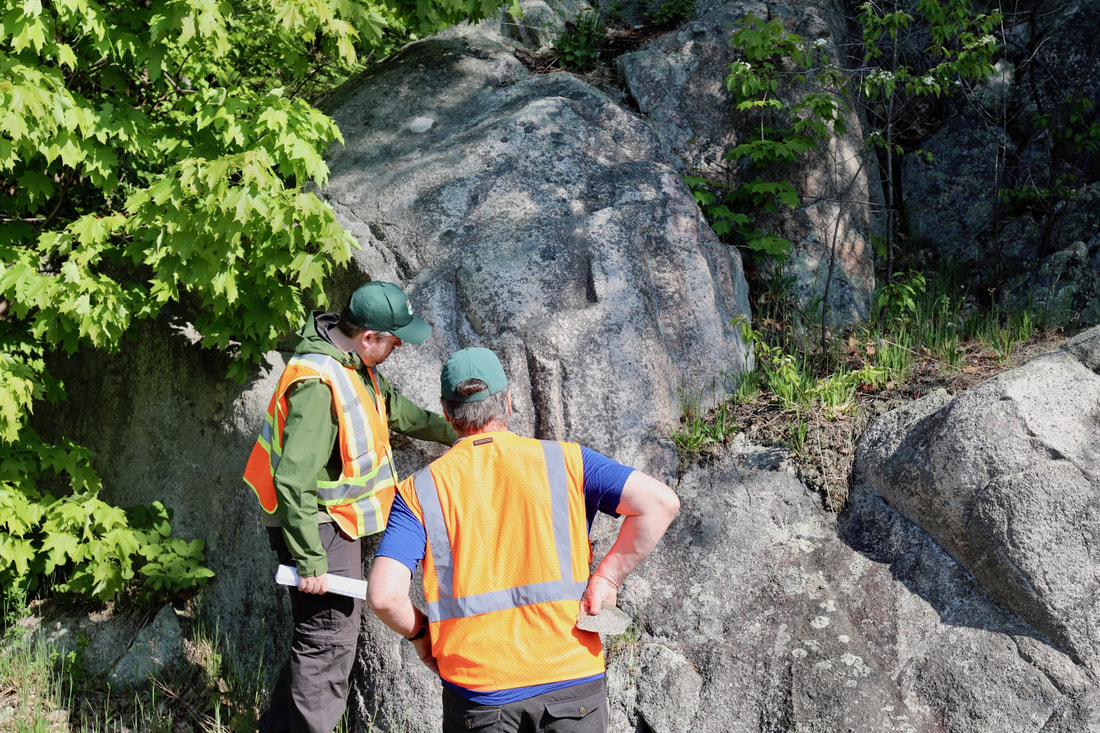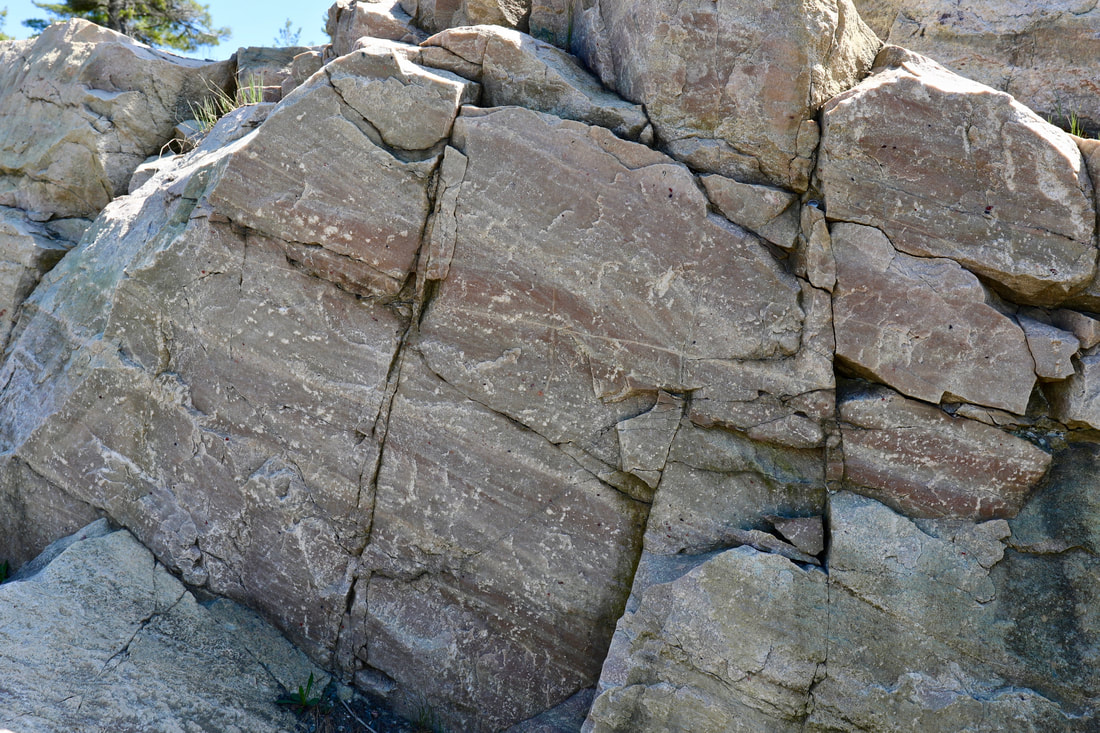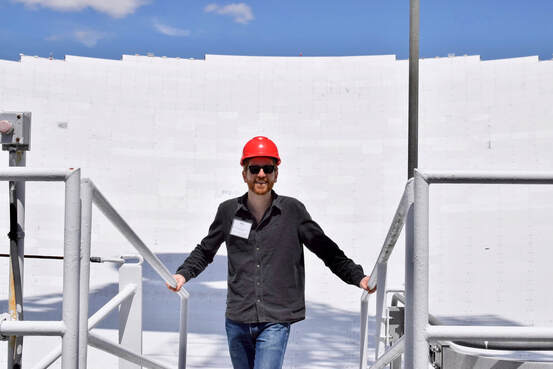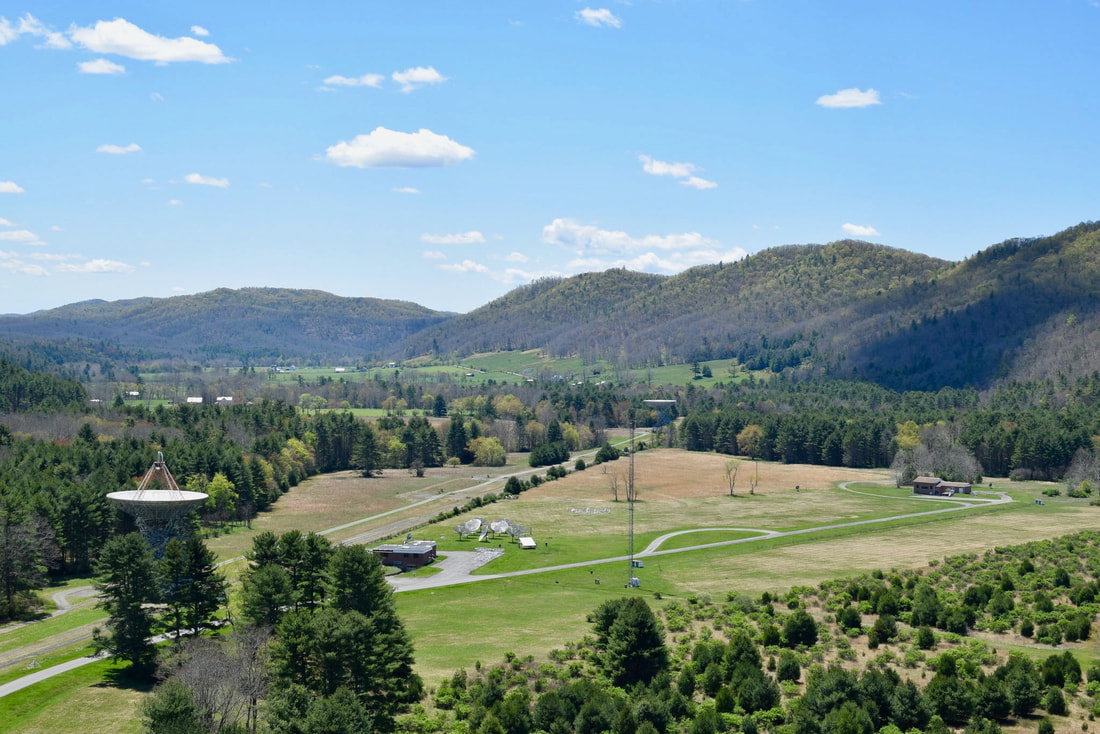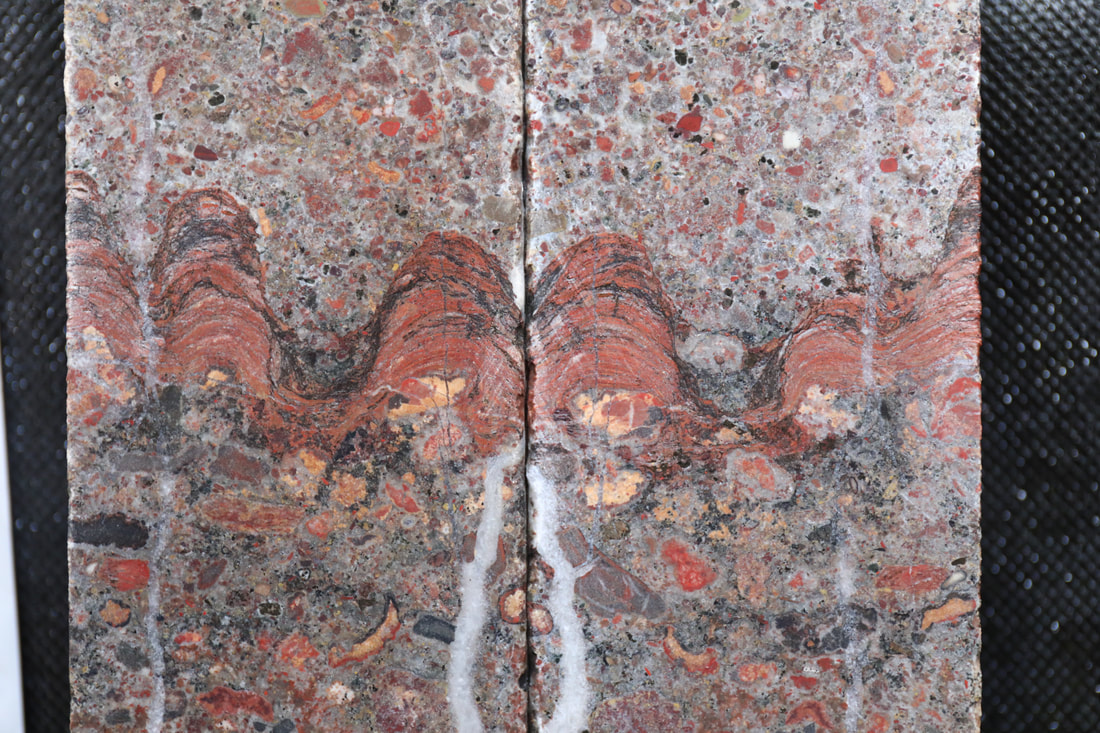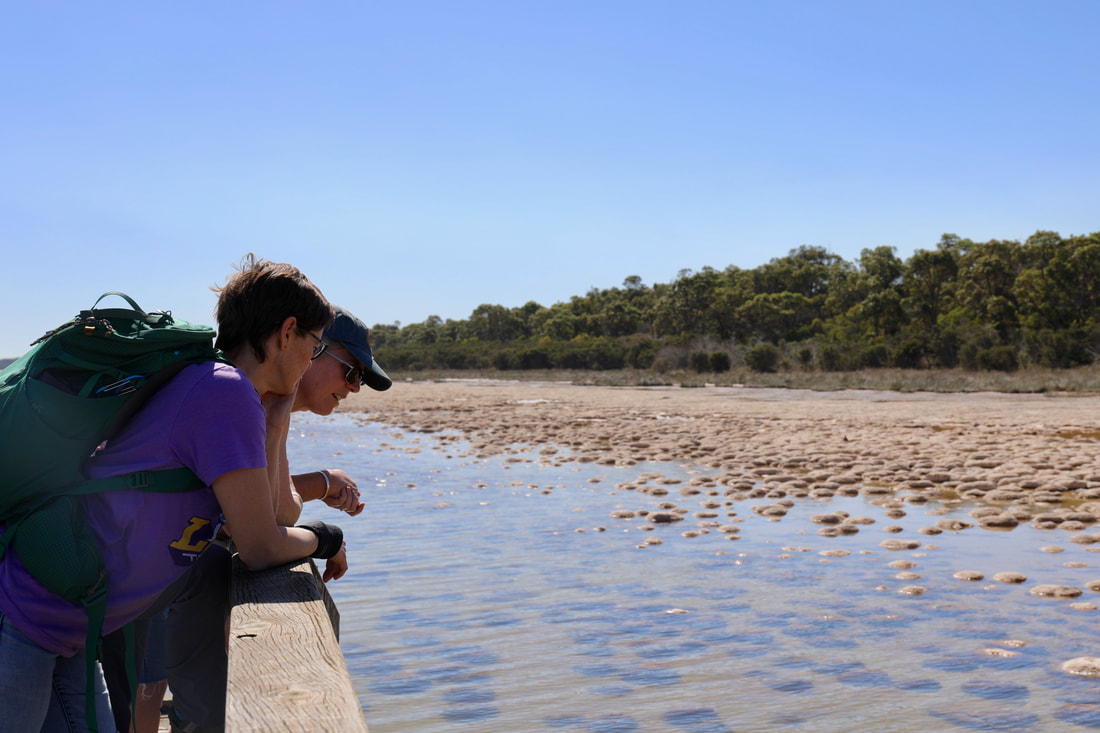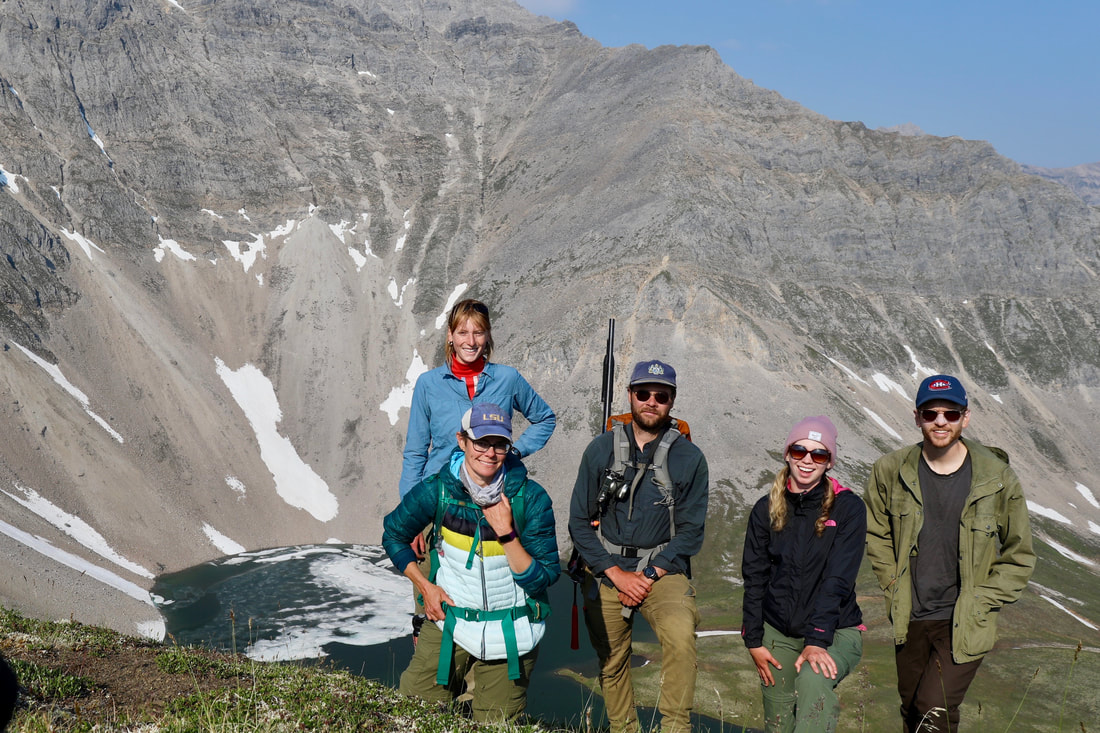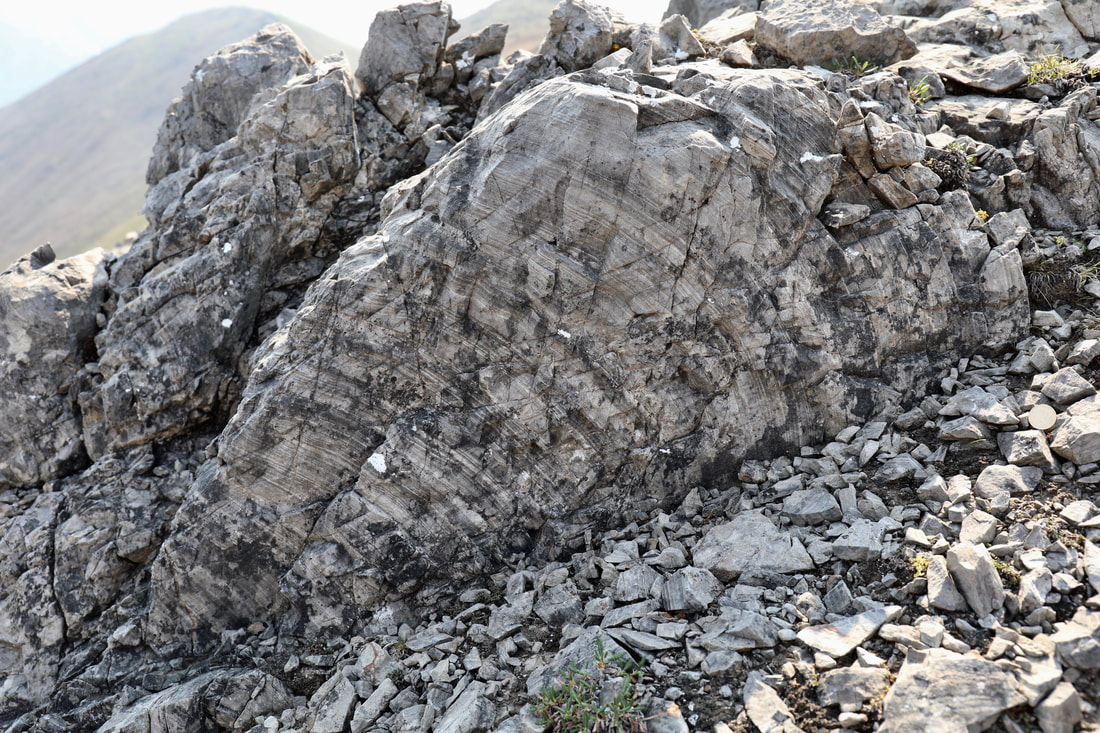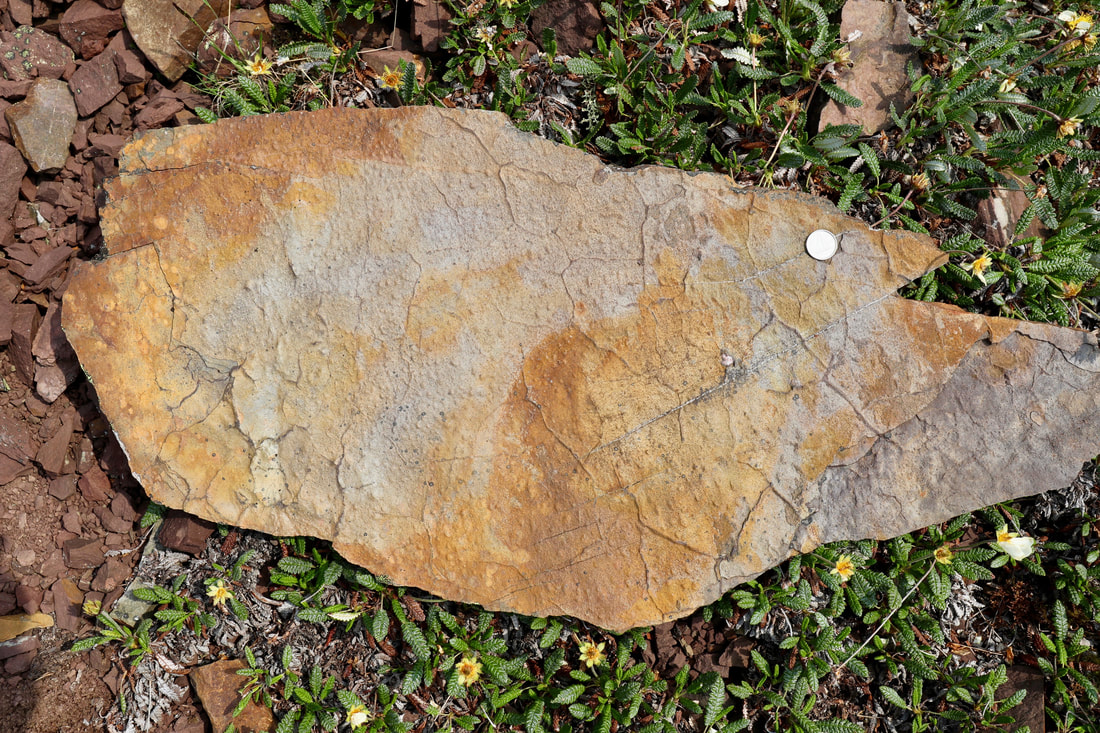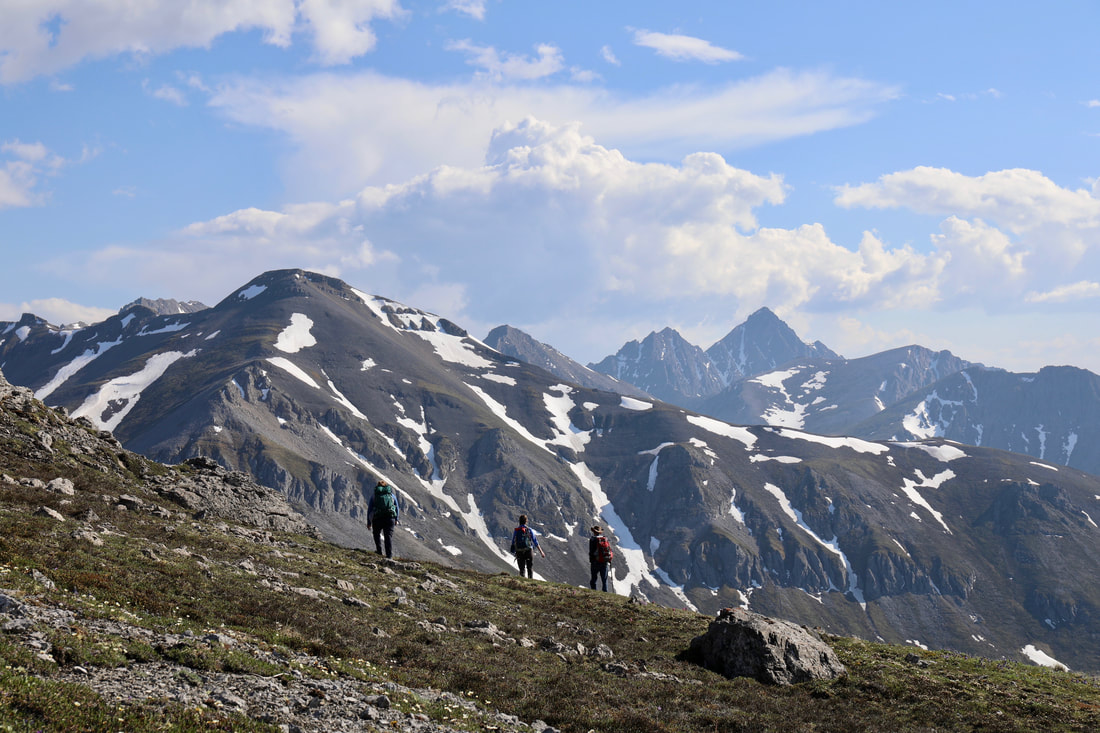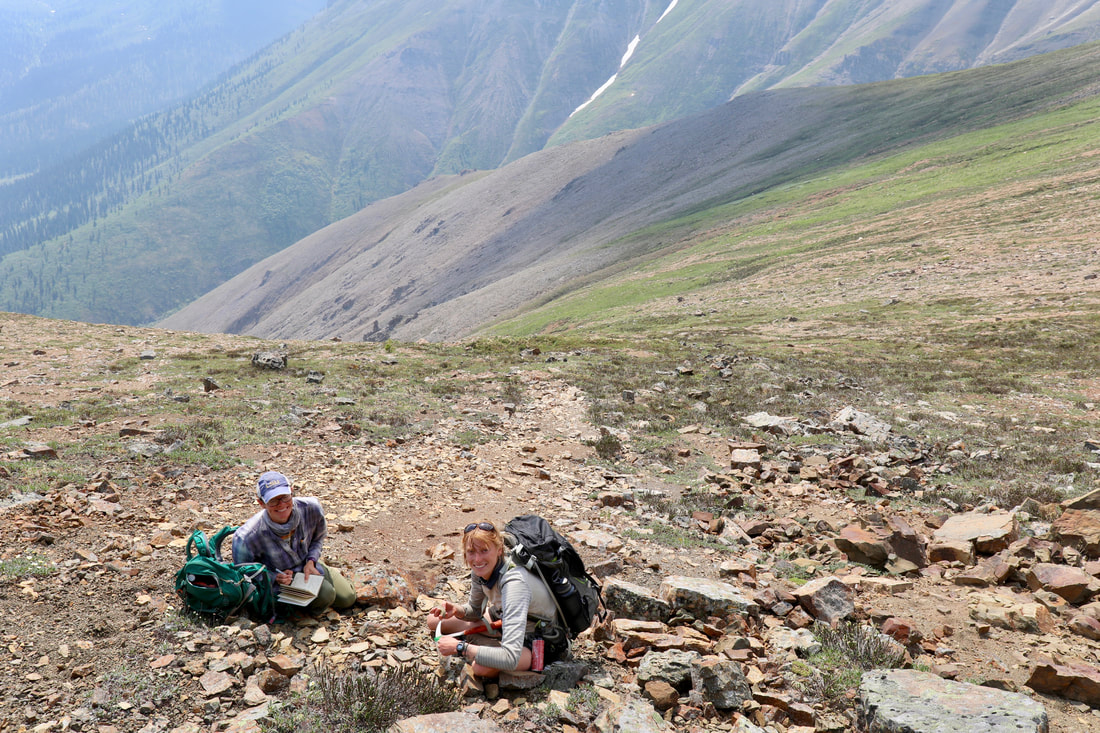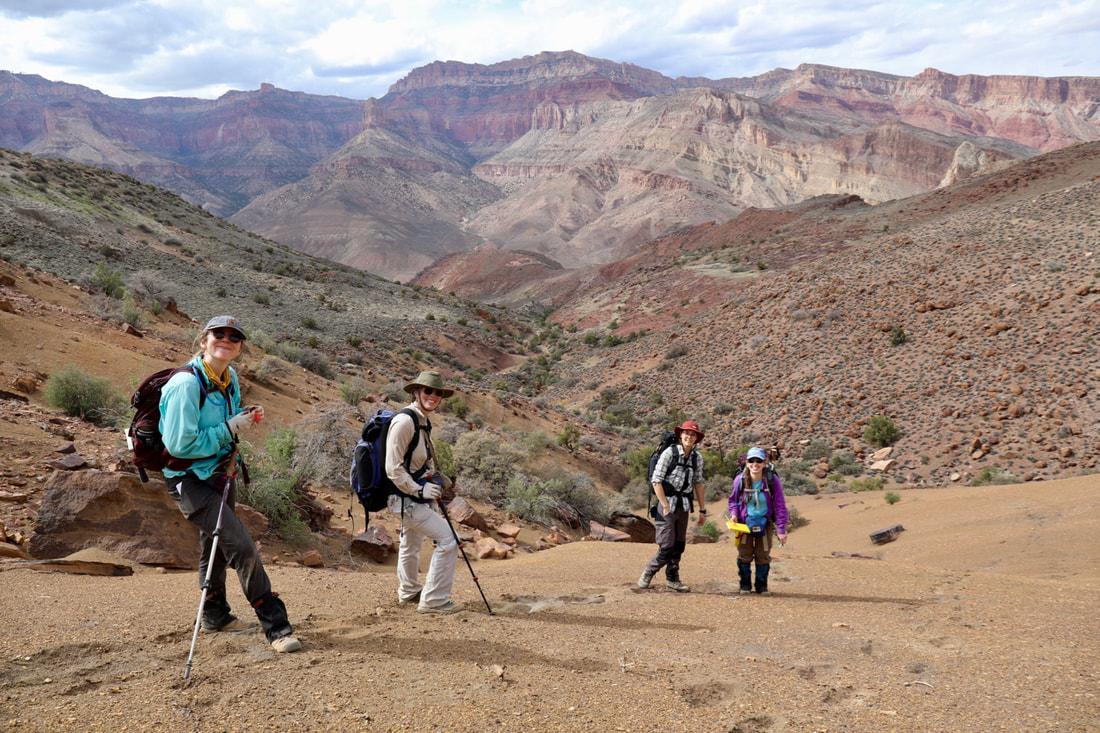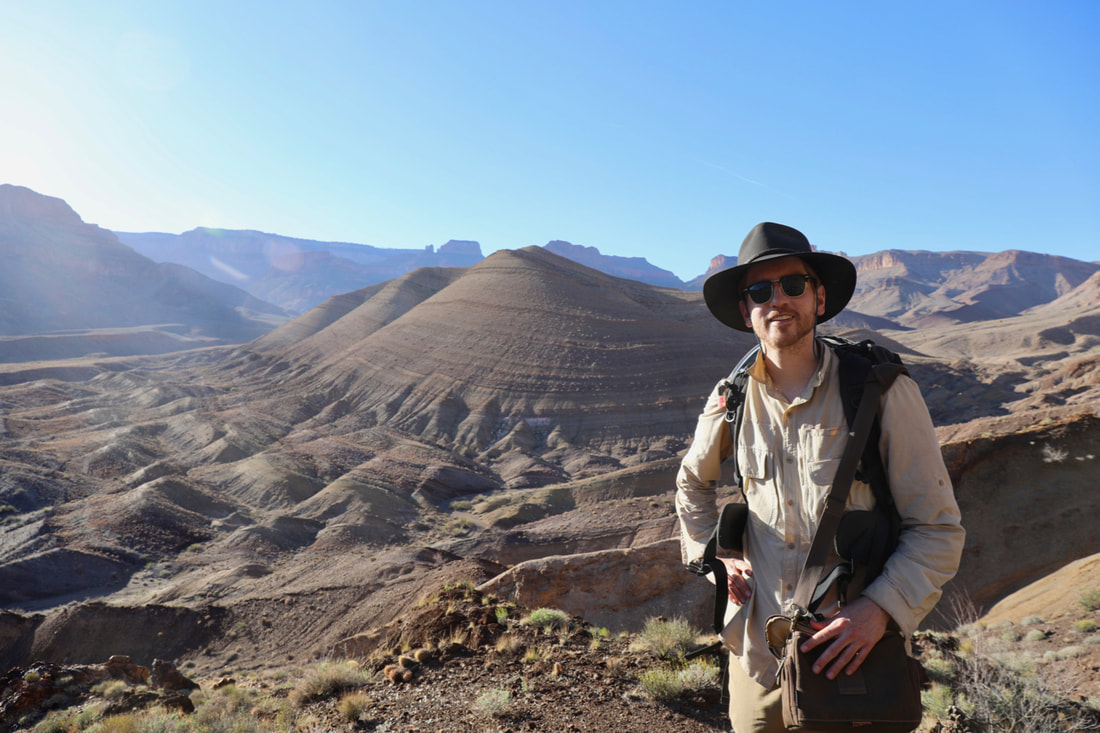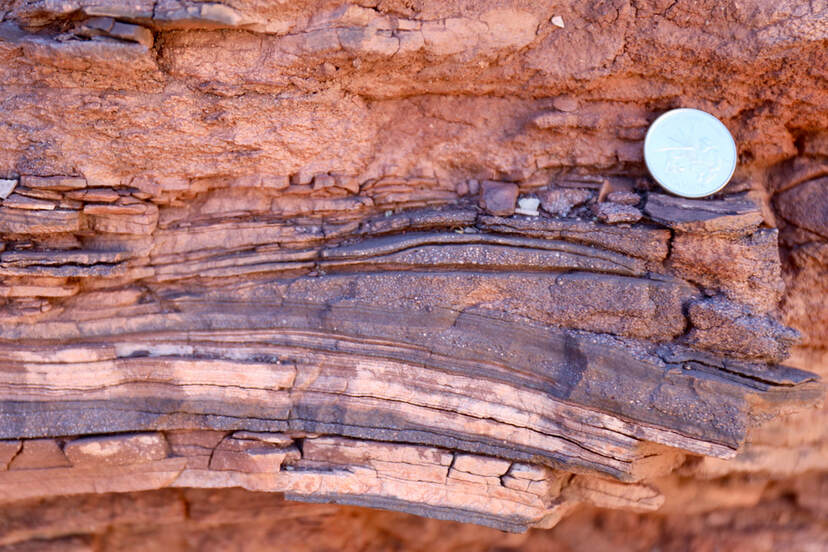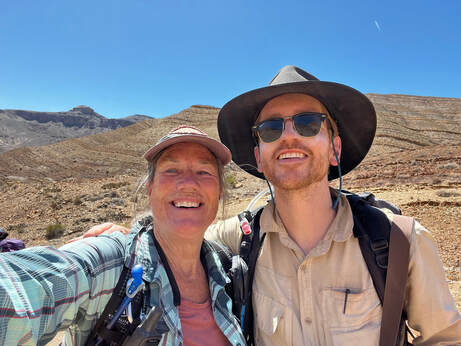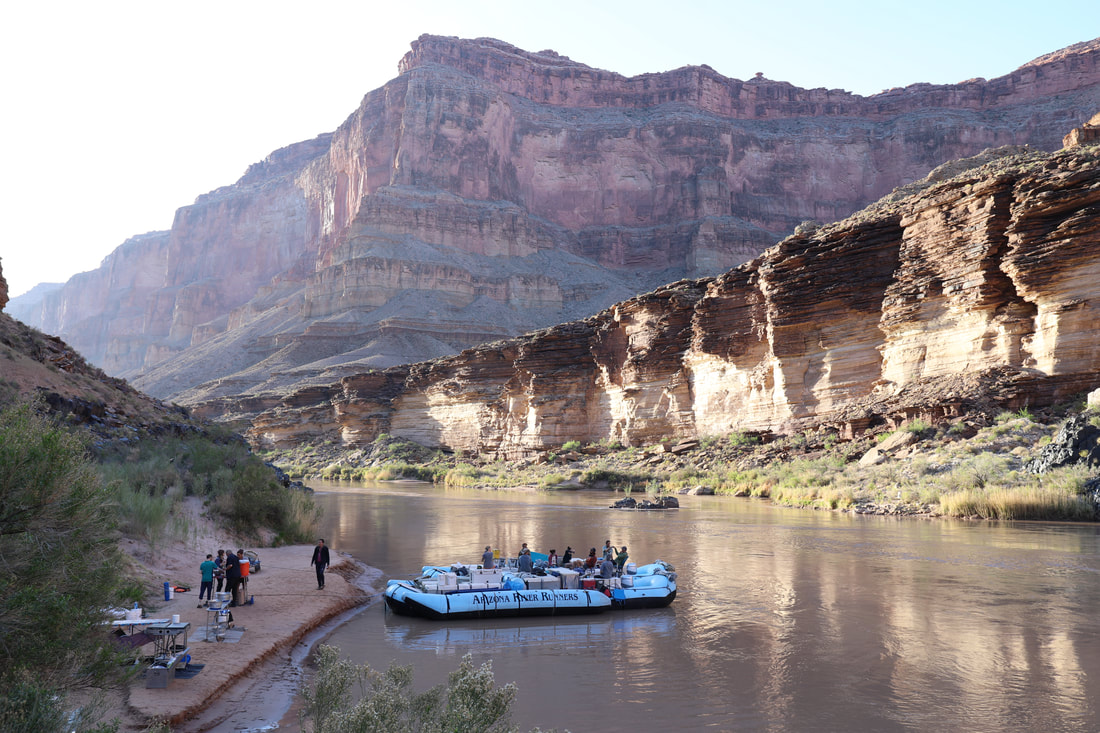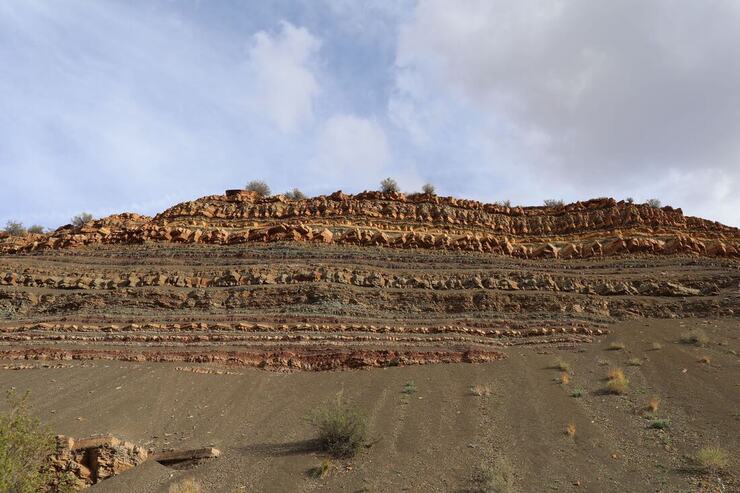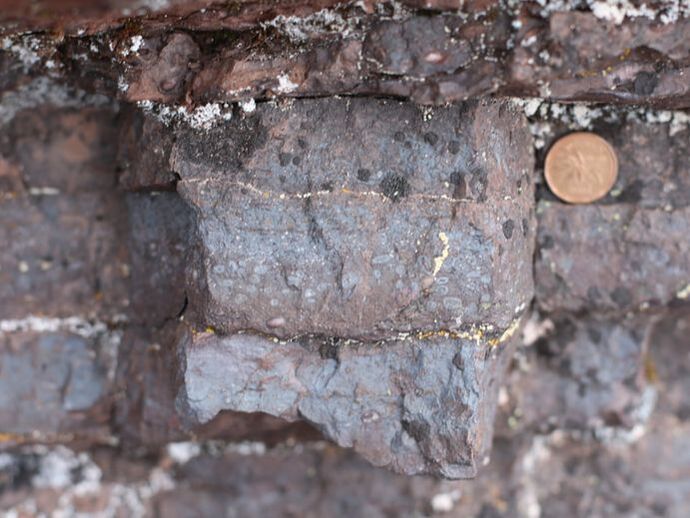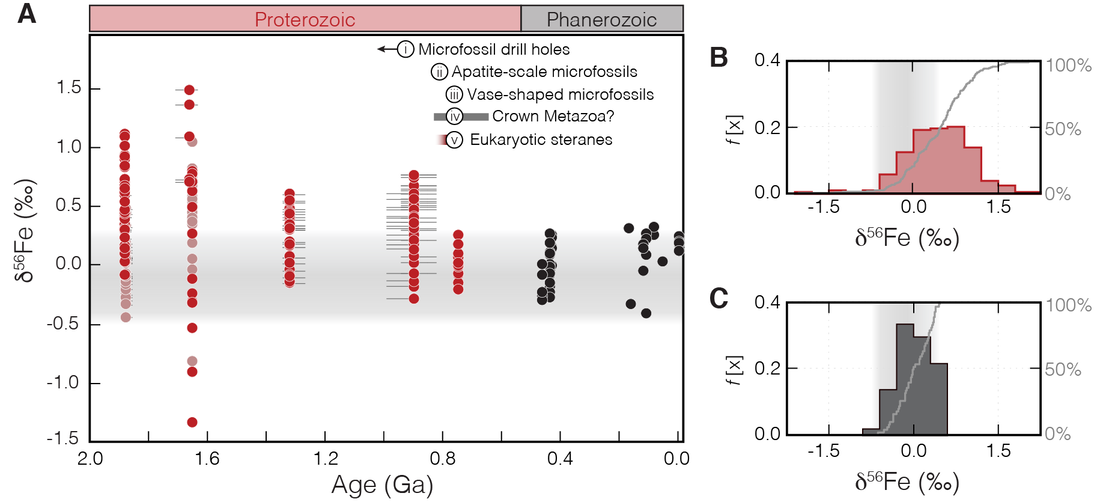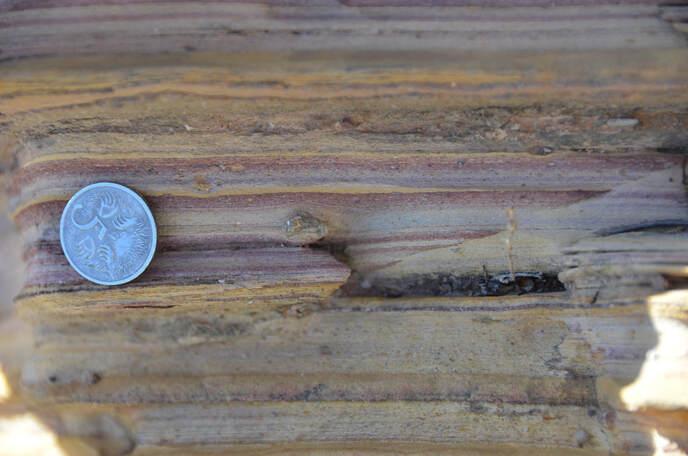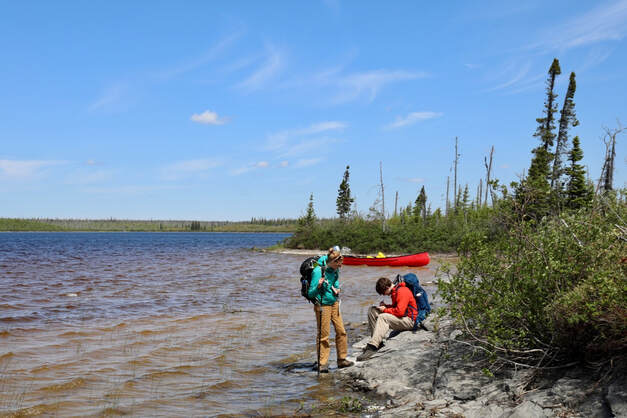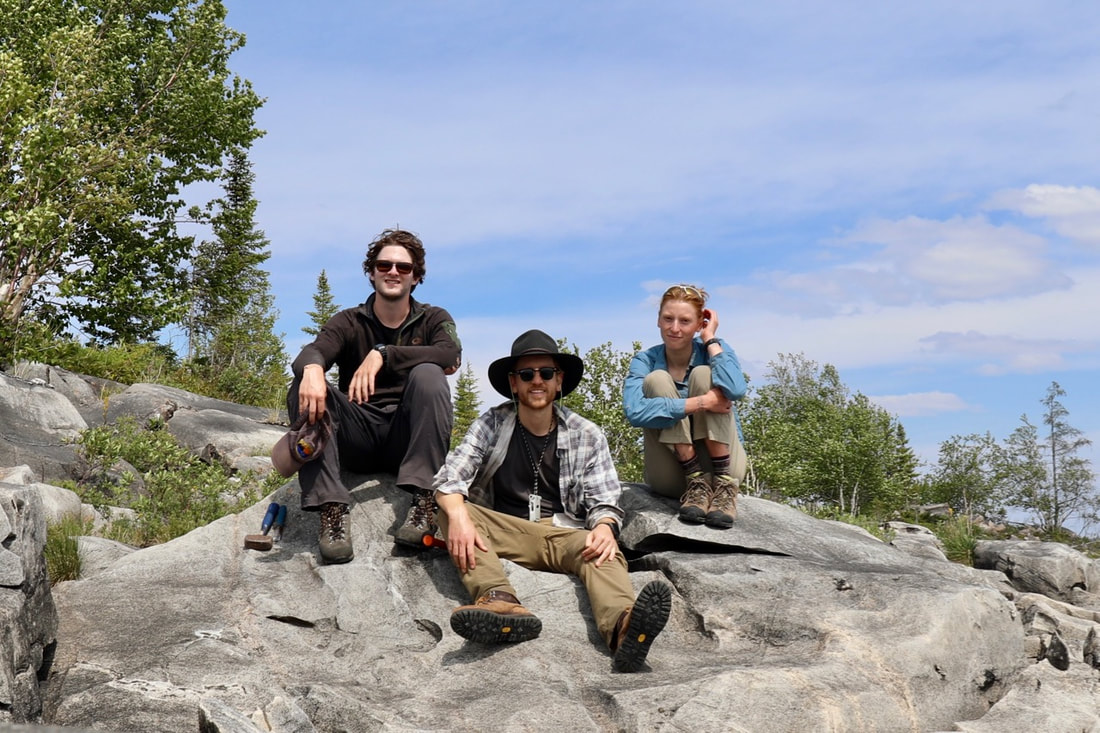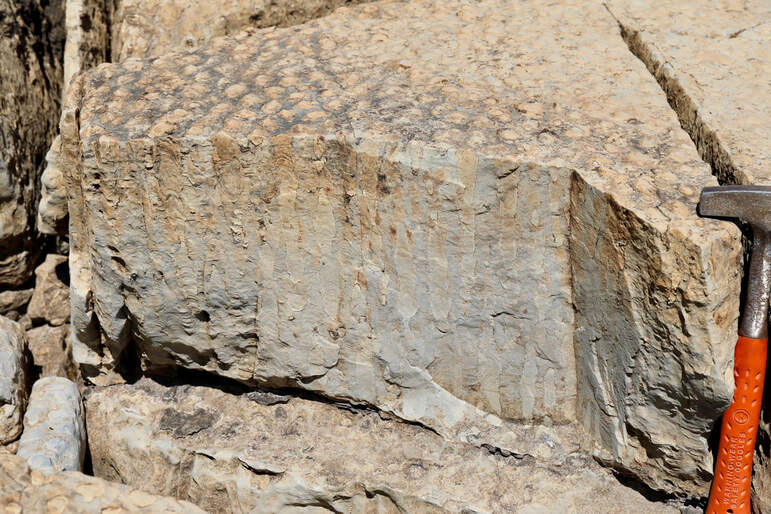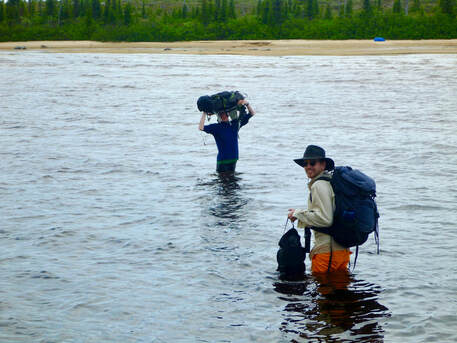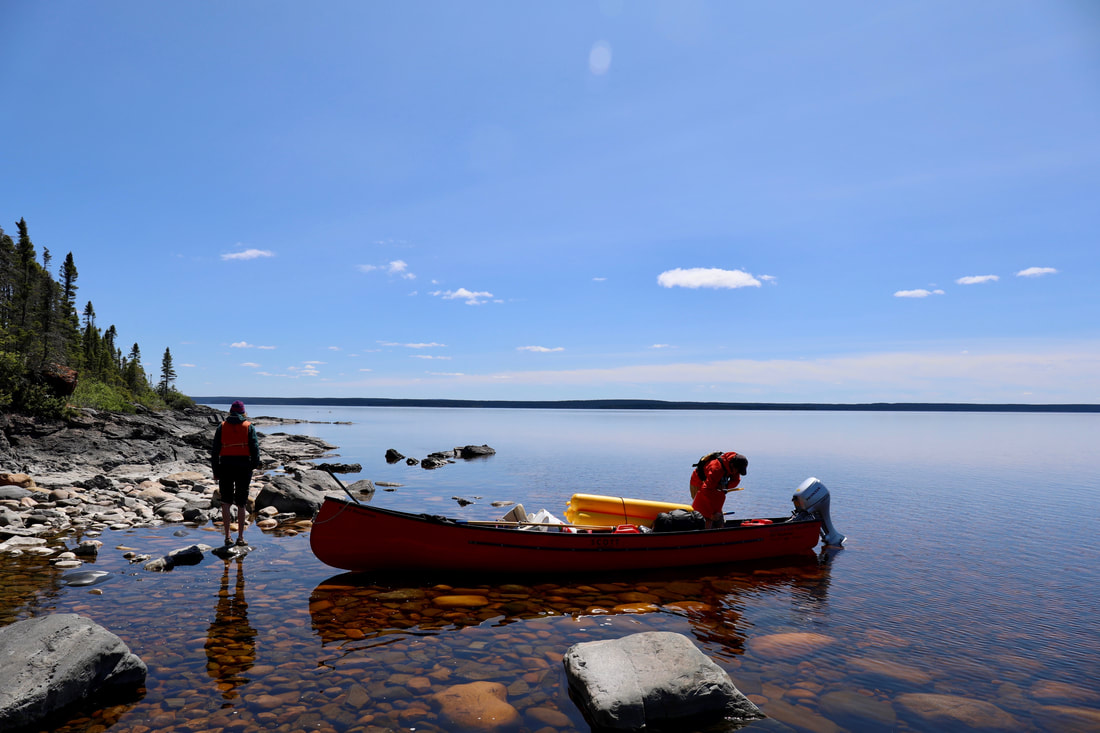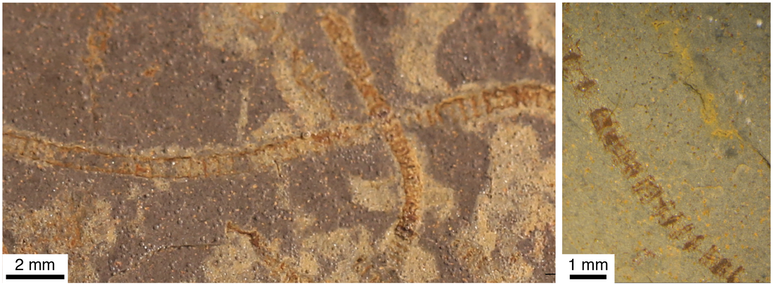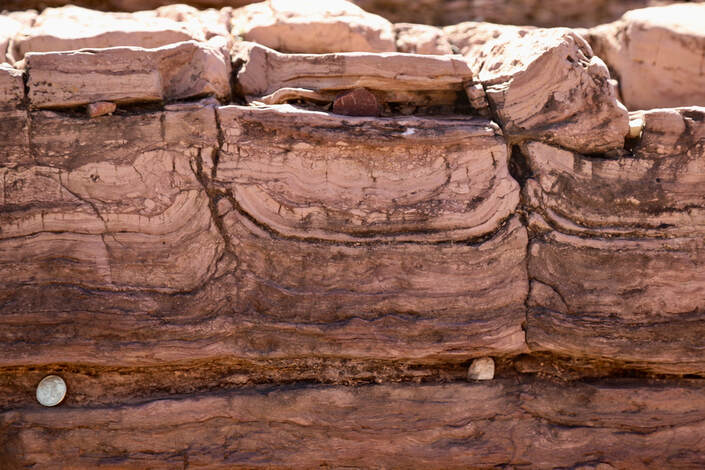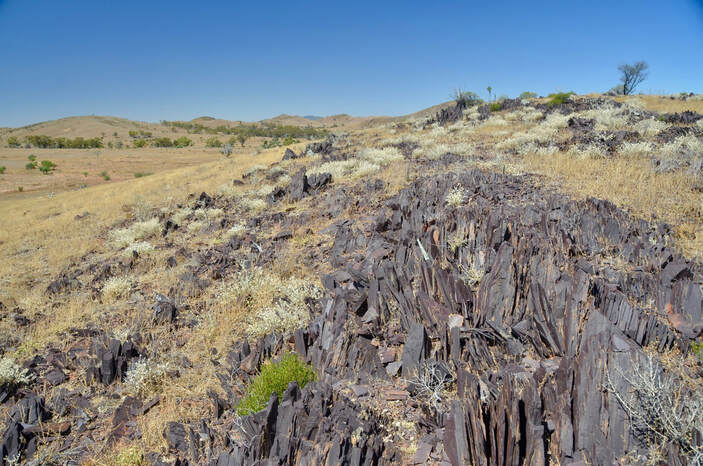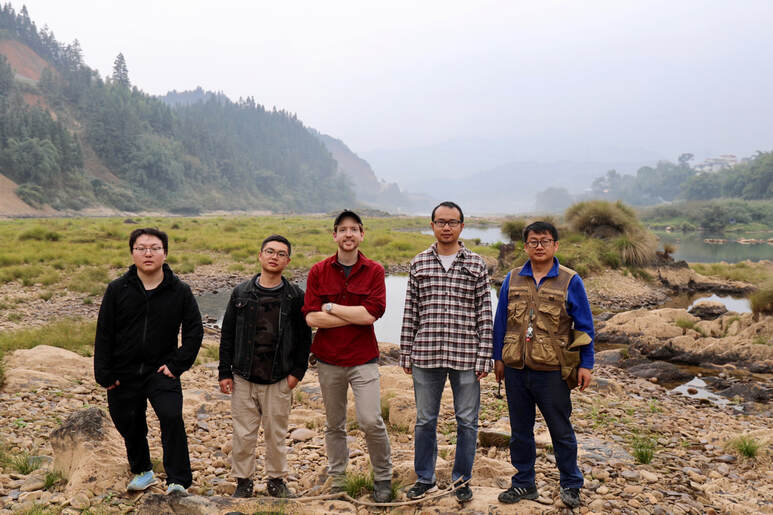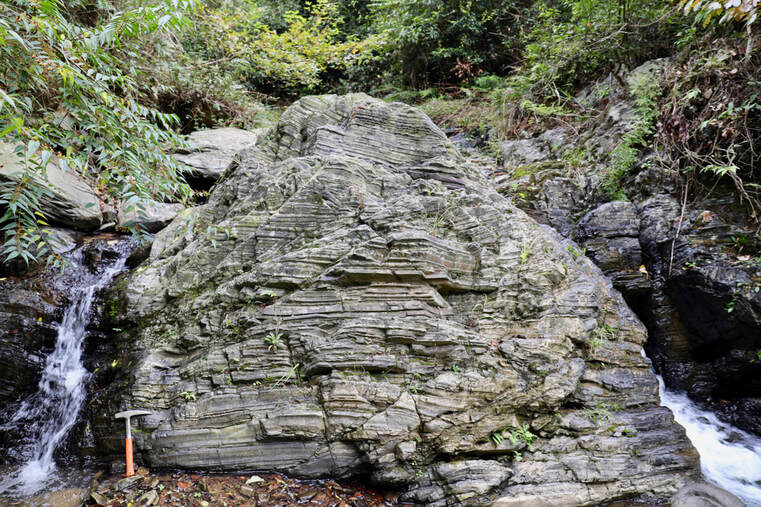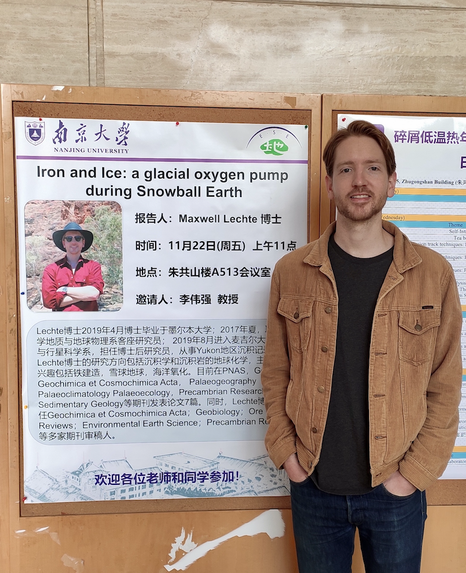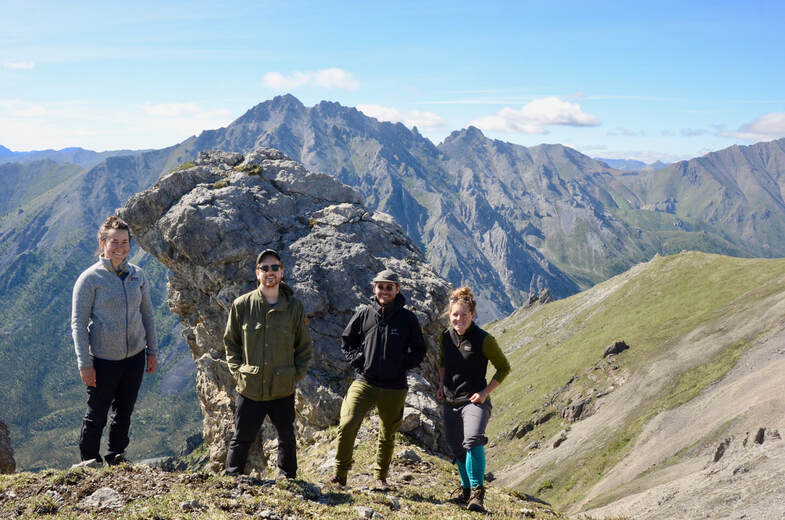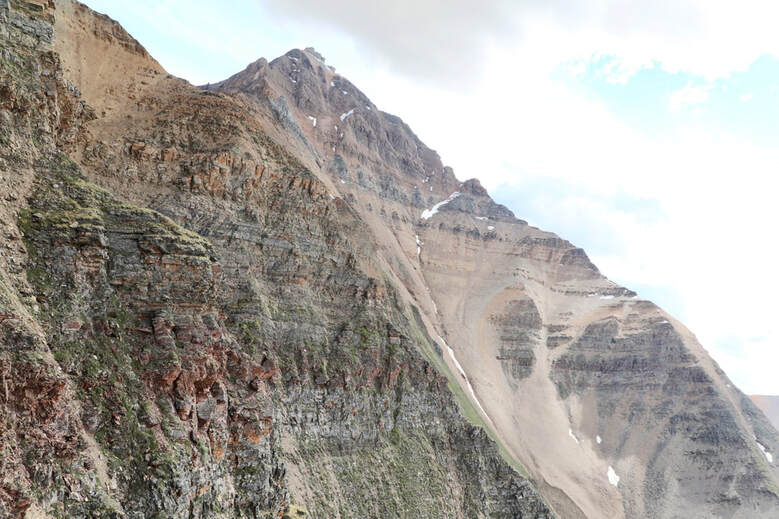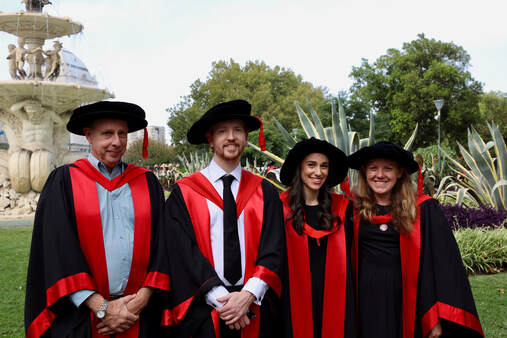|
PhD 2019 Earth Sciences, University of Melbourne MSc (Distinction) 2014
Earth Sciences, University of Melbourne BSc 2011
Geology, University of Melbourne |
NEWS
May 2024:
New paper out in Earth-Science Reviews, where we discuss the significance of ironstones to understanding Precambrian surface environments, including chemical weathering and marine iron cycling. We contrast ironstones to iron formations and speculate about the significance of this record. We argue that the oxidation of the atmosphere during the Great Oxidation Event was a prerequisite for ironstone formation, and that these deposits record changing weathering regimes through time, with implications for the delivery of nutrients to the oceans and the evolution of the Earth's climate.
Oolitic ironstones, continental iron flux and reverse weathering in the Proterozoic Eon: Insights from the Tonian Katherine Group, Yukon
New paper out in Earth-Science Reviews, where we discuss the significance of ironstones to understanding Precambrian surface environments, including chemical weathering and marine iron cycling. We contrast ironstones to iron formations and speculate about the significance of this record. We argue that the oxidation of the atmosphere during the Great Oxidation Event was a prerequisite for ironstone formation, and that these deposits record changing weathering regimes through time, with implications for the delivery of nutrients to the oceans and the evolution of the Earth's climate.
Oolitic ironstones, continental iron flux and reverse weathering in the Proterozoic Eon: Insights from the Tonian Katherine Group, Yukon
March 2024:
After over four years at McGill University, I left Montréal to move to Melbourne. Here, I have taken up my new position as Research Fellow in Sedimentary Geology and Critical Minerals at the School of Geography, Earth and Atmospheric Sciences University of Melbourne.
After over four years at McGill University, I left Montréal to move to Melbourne. Here, I have taken up my new position as Research Fellow in Sedimentary Geology and Critical Minerals at the School of Geography, Earth and Atmospheric Sciences University of Melbourne.
November 2023:
Visited the Minnesota Department of Natural Resources drill core facility in Hibbing, Minnesota (the birthplace of Bob Dylan). Here we were looking at Palaeoproterozoic (ca. 2.0–1.8 billion-year-old) marine sedimentary rocks from the Animikie Group, in collaboration with Prof. Latisha Brengman, Susannah Porter and Galen Halverson. These rocks are well preserved and record a crucial time in terms of the evolution of the Earth's ocean chemistry.
Visited the Minnesota Department of Natural Resources drill core facility in Hibbing, Minnesota (the birthplace of Bob Dylan). Here we were looking at Palaeoproterozoic (ca. 2.0–1.8 billion-year-old) marine sedimentary rocks from the Animikie Group, in collaboration with Prof. Latisha Brengman, Susannah Porter and Galen Halverson. These rocks are well preserved and record a crucial time in terms of the evolution of the Earth's ocean chemistry.
July 2023:
Was great to be back at the Goldschmidt Conference in Lyon, after several years without attending a big conference. I presented in the session titled "Multidisciplinary approaches to understanding the coevolution of life and oxygen", chaired by Heda Agić, Fred Bowyer and Lewis Alcott.
Was great to be back at the Goldschmidt Conference in Lyon, after several years without attending a big conference. I presented in the session titled "Multidisciplinary approaches to understanding the coevolution of life and oxygen", chaired by Heda Agić, Fred Bowyer and Lewis Alcott.
June 2023:
Another successful trip to Yukon, this time to the Coal Creek Inlier (Ogilvie Mountains) with Katie Maloney, Charlotte Spruzen and Lucy Webb. This field season was mainly focused on the Tonian Period, and investigating the co-evolution of marine reef ecosystems with changing environments during this time.
Another successful trip to Yukon, this time to the Coal Creek Inlier (Ogilvie Mountains) with Katie Maloney, Charlotte Spruzen and Lucy Webb. This field season was mainly focused on the Tonian Period, and investigating the co-evolution of marine reef ecosystems with changing environments during this time.
May 2023:
I was invited to the Geological Association of Canada annual meeting in Sudbury to give a keynote address in the session on "Geobiology of the Late Archean to Early Paleoproterozoic Surface World and its Impacts on Proterozoic Evolution". Following this meeting, Prof. Mike Babechuk (Memorial University) and other members of the Canadian Geobiology community organised a post-conference field trip to see the Huronian Supergroup. This included Palaeoproterozoic sedimentary strata which track the onset of the Great Oxidation Event in the form of the disappearance detrital minerals which are soluble under oxic conditions (such as pyrite and uraninite), and the first appearance of iron oxide cements known as "red beds". It was in this region that some of the earliest groundwork on Earth's ancient oxygenation was conducted by Dr. Stu Roscoe (who dubbed this transition the "oxyatmoversion"). glacial deposits (possibly a global ice age) and evidence for the "oxyatmoversion" (the transition to an oxidising atmosphere) in palaeosols and red beds. We also got to see several distinct glacial units, which are some of the oldest unequivocal evidence for ice on Earth, some of which may represent a widespread or global glacial event.
I was invited to the Geological Association of Canada annual meeting in Sudbury to give a keynote address in the session on "Geobiology of the Late Archean to Early Paleoproterozoic Surface World and its Impacts on Proterozoic Evolution". Following this meeting, Prof. Mike Babechuk (Memorial University) and other members of the Canadian Geobiology community organised a post-conference field trip to see the Huronian Supergroup. This included Palaeoproterozoic sedimentary strata which track the onset of the Great Oxidation Event in the form of the disappearance detrital minerals which are soluble under oxic conditions (such as pyrite and uraninite), and the first appearance of iron oxide cements known as "red beds". It was in this region that some of the earliest groundwork on Earth's ancient oxygenation was conducted by Dr. Stu Roscoe (who dubbed this transition the "oxyatmoversion"). glacial deposits (possibly a global ice age) and evidence for the "oxyatmoversion" (the transition to an oxidising atmosphere) in palaeosols and red beds. We also got to see several distinct glacial units, which are some of the oldest unequivocal evidence for ice on Earth, some of which may represent a widespread or global glacial event.
|
|
|
May 2023:
I was lucky enough to be invited to AstroBio 2023: the Barry Blumberg Memorial Workshop at the Green Bank Observatory, West Virginia. This was a fantastic workshop on "Oxygen in Planetary Biospheres" featuring talks from a wide range of disciplines, including radioastronomy, atmospheric modelling, geochemistry, planetary science, and biology. Outside of the workshop, highlights included getting to see the Green Bank Telescope (one of the largest moving structures in the world), as well as seeing where Frank Drake wrote the Drake Equation and performed the world's first modern experiments in the search for extraterrestrial intelligence (Project Ozma).
I was lucky enough to be invited to AstroBio 2023: the Barry Blumberg Memorial Workshop at the Green Bank Observatory, West Virginia. This was a fantastic workshop on "Oxygen in Planetary Biospheres" featuring talks from a wide range of disciplines, including radioastronomy, atmospheric modelling, geochemistry, planetary science, and biology. Outside of the workshop, highlights included getting to see the Green Bank Telescope (one of the largest moving structures in the world), as well as seeing where Frank Drake wrote the Drake Equation and performed the world's first modern experiments in the search for extraterrestrial intelligence (Project Ozma).
April 2023:
Paid a visit to the drill core archives of the Geological Survey of Western Australia (GSWA) in Perth and Kalgoorlie. Here, I was working with Galen Halverson (McGill), Leigh Anne Riedman and Susannah Porter (UC Santa Barbara), and Heidi Allen and Peter Haines (GSWA) looking at drill cores from the Neoarchaean–Palaeoproterozoic transition for future work trying to understand the co-evolution of life and the environment during this dynamic time period. It's amazing to have access to such incredibly well-preserved and ancient rocks, featuring beautiful stromatolites, and also cool to be able to travel down the road and see modern equivalents (thrombolites and stromatolites) living on the modern coastline!
January 2023:
Thank you to the Department of Earth Sciences, Carleton University for hosting my visit and for giving me the opportunity to present my research on Proterozoic eukaryotes as part of their seminar series.
October 2022:
Presented some of my research as part of the Virtual Seminars in Precambrian Geology series. The presentation can be found on Youtube here.
September 2022:
Thanks to the Department of Earth Sciences at Dartmouth College for having me down for a talk!
June–July 2022:
Had a very successful field trip to Yukon to study the middle Proterozoic archive of the Coal Creek Inlier (Tr'ondëk Hwëch'in Territory) with our research group at McGill and collaborators. The Proterozoic inliers of Yukon host a rare, well-preserved archive of sedimentary deposition during this important time interval. We studied a range of units spanning over 800 million years in order to better understand basin evolution and environmental conditions during the middle Proterozoic.
April 2022:
Took part in the Grand Canyon Field Forum organised by Karl Karlstrom, Laura Crossey, James Hagadorn, Susannah Porter, Mark Schmitz and Mike Timmons. We had a fantastic group interested in a wide range of research topics related to the Grand Canyon Supergroup and the Great Unconformity. Alongside Susannah Porter, Heda Agić, Sarah Slotznick and Kelly Tingle, my work in this area was focused on the late Tonian Chuar Group.
Took part in the Grand Canyon Field Forum organised by Karl Karlstrom, Laura Crossey, James Hagadorn, Susannah Porter, Mark Schmitz and Mike Timmons. We had a fantastic group interested in a wide range of research topics related to the Grand Canyon Supergroup and the Great Unconformity. Alongside Susannah Porter, Heda Agić, Sarah Slotznick and Kelly Tingle, my work in this area was focused on the late Tonian Chuar Group.
January 2022:
Excited to finally share our latest work on ironstones as a proxy for Proterozoic oxygen levels, with Changle Wang, Chris Reinhard, Dan Asael, Devon Cole , Galen Halverson, Susannah Porter , Nir Galili , Itay Halevy , Rob Rainbird, Tim Lyons & Noah Planavsky. Iron-rich chemical sediments are widely used as proxies for palaeo-seawater chemistry. Ironstones are nearshore marine sedimentary rocks featuring iron ooids that are common in the Phanerozoic geological record. Rare Precambrian ironstones can offer valuable insights into shallow seawater chemistry during the middle Proterozoic "iron formation gap", following the cessation of widespread iron formation deposition in the Palaeoproterozoic. Estimates for surface oxygen levels during this interval, also known as the "boring billion", are highly debated, obscuring the relationship between environmental conditions and early eukaryotic evolution. We show that the fractionated iron isotopic signatures of these Proterozoic ironstones are indicative of partial oxidation in shallow seawater, likely requiring low O2 concentrations. This stands in contrast to Phanerozoic ironstones, which are unfractionated and support complete Fe(II) oxidation. The ironstone record shows that these low surface oxygen conditions continued until a rise in the late Tonian Period, consistent with other geochemical proxies and fossil evidence for the emergence of complex eukaryotic ecosystems.
Excited to finally share our latest work on ironstones as a proxy for Proterozoic oxygen levels, with Changle Wang, Chris Reinhard, Dan Asael, Devon Cole , Galen Halverson, Susannah Porter , Nir Galili , Itay Halevy , Rob Rainbird, Tim Lyons & Noah Planavsky. Iron-rich chemical sediments are widely used as proxies for palaeo-seawater chemistry. Ironstones are nearshore marine sedimentary rocks featuring iron ooids that are common in the Phanerozoic geological record. Rare Precambrian ironstones can offer valuable insights into shallow seawater chemistry during the middle Proterozoic "iron formation gap", following the cessation of widespread iron formation deposition in the Palaeoproterozoic. Estimates for surface oxygen levels during this interval, also known as the "boring billion", are highly debated, obscuring the relationship between environmental conditions and early eukaryotic evolution. We show that the fractionated iron isotopic signatures of these Proterozoic ironstones are indicative of partial oxidation in shallow seawater, likely requiring low O2 concentrations. This stands in contrast to Phanerozoic ironstones, which are unfractionated and support complete Fe(II) oxidation. The ironstone record shows that these low surface oxygen conditions continued until a rise in the late Tonian Period, consistent with other geochemical proxies and fossil evidence for the emergence of complex eukaryotic ecosystems.
September 2021:
New paper out in Geobiology, led by Ash Hood, which documents dolomite beds in the Cryogenian Yudnamutana Subgroup, which appear to have been deposited during the Sturtian ice age. These deposits, alongisde other Sturtian synglacial carbonates described globally, the question of whether authigenic marine carbonates could have precipitated during Snowball Earth. The implications of synglacial carbonate precipitation for chemical weathering, ocean chemistry, and climate during "Snowball Earth" are explored with a global biogeochemical model. Without continental silicate weathering and carbonate burial as a CO2 sink, it is difficult to maintain the greenhouse effect below the deglaciation threshold for longer than a few million years (compared to the ~60 million year duration of the Sturtian ice age), as well as maintaining a high seawater Mg/Ca ratio. These results suggest that a small degree of chemical weathering was likely maintained during Snowball Earth, possibly via the continental weathering of subglacial bedrock by meltwater.
New paper out in Geobiology, led by Ash Hood, which documents dolomite beds in the Cryogenian Yudnamutana Subgroup, which appear to have been deposited during the Sturtian ice age. These deposits, alongisde other Sturtian synglacial carbonates described globally, the question of whether authigenic marine carbonates could have precipitated during Snowball Earth. The implications of synglacial carbonate precipitation for chemical weathering, ocean chemistry, and climate during "Snowball Earth" are explored with a global biogeochemical model. Without continental silicate weathering and carbonate burial as a CO2 sink, it is difficult to maintain the greenhouse effect below the deglaciation threshold for longer than a few million years (compared to the ~60 million year duration of the Sturtian ice age), as well as maintaining a high seawater Mg/Ca ratio. These results suggest that a small degree of chemical weathering was likely maintained during Snowball Earth, possibly via the continental weathering of subglacial bedrock by meltwater.
July 2021:
Conducted field work on the late Palaeoproterozoic sedimentary archive of Lake Mistassini and Lake Albanel in Eeyou Istchee, with Malcolm Hodgskiss (Cambridge) and Maggie Whelan (McGill). Because of the pandemic, we were required to avoid contact with the local communities, and we are thankful to the Cree Nation of Mistissini for permission to conduct research on their land. Our research was focused on the palaeoenvironmental implications of the carbonates and iron formation of the Orosirian Mistassini Group.
Conducted field work on the late Palaeoproterozoic sedimentary archive of Lake Mistassini and Lake Albanel in Eeyou Istchee, with Malcolm Hodgskiss (Cambridge) and Maggie Whelan (McGill). Because of the pandemic, we were required to avoid contact with the local communities, and we are thankful to the Cree Nation of Mistissini for permission to conduct research on their land. Our research was focused on the palaeoenvironmental implications of the carbonates and iron formation of the Orosirian Mistassini Group.
March 2021:
Excited to share this new paper led by Katie Maloney (University of Toronto Mississauga), reporting new fossil algae in the ca. 900 Ma Hematite Creek Group from our field work in Yukon! These likely represent some of the oldest green seaweeds. The emergence and expansion of green seaweeds in marine environments would have had a huge impact on ecosystem structure and photosynthetic production in the lead-up to the evolution of animals in the Neoproterozoic. Check out the paper in Geology.
Excited to share this new paper led by Katie Maloney (University of Toronto Mississauga), reporting new fossil algae in the ca. 900 Ma Hematite Creek Group from our field work in Yukon! These likely represent some of the oldest green seaweeds. The emergence and expansion of green seaweeds in marine environments would have had a huge impact on ecosystem structure and photosynthetic production in the lead-up to the evolution of animals in the Neoproterozoic. Check out the paper in Geology.
December 2020:
Recent work investigating the paleoenvironmental significance of sedimentary manganese enrichments in the ca. 1580 Ma Gaoyuzhuang Formation (North China), led by Hao Fang and Dongjie Tang (Chinese University of Geosciences, Beijing), was published in Paleo3.
September 2020:
Thanks to funding from Moore–Simons Project on the Origin of the Eukaryotic Cell, I'm excited to be starting a new postdoc at the McGill Department of Earth and Planetary Sciences on the environmental conditions of Proterozoic eukaryotes with Galen Halverson, in collaboration with Leigh Anne Reidman and Susannah Porter!
September 2020:
Presented some of my research into ironstones from the Yukon—and shallow marine iron cycling in the Tonian—at GSA Connects Online 2020. Thanks to session chairs Tim Gibson, Ash Hood, Anne-Sofie Ahm and Peter Crockford for inviting me and organising a fantastic session on reconstructing the environmental conditions and evolutionary trends of the Tonian Period.
February 2020:
Thanks to Geotop for having me present my research as part of their departmental seminar series at the Université du Québec à Montréal.
Brennan O'Connell's paper (with Malcolm Wallace, Ash Hood and Noah Planavsky) on the peritidal deposits of the Cryogenian Angepena Formation was just published in Precambrian Research, offering insights into the shallow marine redox state in between the two Snowball Earth events.
Recent work investigating the paleoenvironmental significance of sedimentary manganese enrichments in the ca. 1580 Ma Gaoyuzhuang Formation (North China), led by Hao Fang and Dongjie Tang (Chinese University of Geosciences, Beijing), was published in Paleo3.
September 2020:
Thanks to funding from Moore–Simons Project on the Origin of the Eukaryotic Cell, I'm excited to be starting a new postdoc at the McGill Department of Earth and Planetary Sciences on the environmental conditions of Proterozoic eukaryotes with Galen Halverson, in collaboration with Leigh Anne Reidman and Susannah Porter!
September 2020:
Presented some of my research into ironstones from the Yukon—and shallow marine iron cycling in the Tonian—at GSA Connects Online 2020. Thanks to session chairs Tim Gibson, Ash Hood, Anne-Sofie Ahm and Peter Crockford for inviting me and organising a fantastic session on reconstructing the environmental conditions and evolutionary trends of the Tonian Period.
February 2020:
Thanks to Geotop for having me present my research as part of their departmental seminar series at the Université du Québec à Montréal.
Brennan O'Connell's paper (with Malcolm Wallace, Ash Hood and Noah Planavsky) on the peritidal deposits of the Cryogenian Angepena Formation was just published in Precambrian Research, offering insights into the shallow marine redox state in between the two Snowball Earth events.
January 2020:
It was great to visit Kingston, present some of my work to Queen's University Department of Geological Sciences and Geological Engineering, and see the incredible collection of Ediacaran fossils of Guy Narbonne.
December 2019:
My research on Cryogenian iron formations (with Malcolm Wallace, Ash Hood, Weiqiang Li, Ganqing Jiang, Galen Halverson, Dan Asael, Steph McColl and Noah Planavsky) has been published in PNAS!
Press coverage: New York Times; CNN; Radio Canada; Science
It was great to visit Kingston, present some of my work to Queen's University Department of Geological Sciences and Geological Engineering, and see the incredible collection of Ediacaran fossils of Guy Narbonne.
December 2019:
My research on Cryogenian iron formations (with Malcolm Wallace, Ash Hood, Weiqiang Li, Ganqing Jiang, Galen Halverson, Dan Asael, Steph McColl and Noah Planavsky) has been published in PNAS!
Press coverage: New York Times; CNN; Radio Canada; Science
November 2019:
Had a successful field trip to Sanjiang County, Guanxi Province (China) to look at Cryogenian rocks with Prof. Weiqiang Li and Prof. Chang-zhi Wu from Nanjing University. Thank you to Prof. Li for hosting me at the State Key Laboratory for Mineral Deposits Research (Nanjing University)!
Had a successful field trip to Sanjiang County, Guanxi Province (China) to look at Cryogenian rocks with Prof. Weiqiang Li and Prof. Chang-zhi Wu from Nanjing University. Thank you to Prof. Li for hosting me at the State Key Laboratory for Mineral Deposits Research (Nanjing University)!
October 2019:
Thanks to Susannah Porter, Leigh Anne Riedman and the rest of their research group at UCSB for hosting me in Santa Barbara this week!
August 2019:
Arrived in Montreal to begin my postdoc at McGill!
I have joined the Precambrian Research Office & Publican Society, the research group headed by Galen Halverson.
June 2019:
Returned from a successful field trip to the Yukon, studying the Tonian and Cryogenian stratigraphy of the Ogilvie and Wernecke Mountains with Galen Halverson, Wilder Greenman, Malcolm Wallace, Ash Hood, Brennan O'Connell, Kelsey Lamothe and Tim Gibson.
The Polar Continental Shelf Program — Science Report 2018 describes some of our work conducted in the Werneckes in 2018.
Thanks to Susannah Porter, Leigh Anne Riedman and the rest of their research group at UCSB for hosting me in Santa Barbara this week!
August 2019:
Arrived in Montreal to begin my postdoc at McGill!
I have joined the Precambrian Research Office & Publican Society, the research group headed by Galen Halverson.
June 2019:
Returned from a successful field trip to the Yukon, studying the Tonian and Cryogenian stratigraphy of the Ogilvie and Wernecke Mountains with Galen Halverson, Wilder Greenman, Malcolm Wallace, Ash Hood, Brennan O'Connell, Kelsey Lamothe and Tim Gibson.
The Polar Continental Shelf Program — Science Report 2018 describes some of our work conducted in the Werneckes in 2018.
May 2019:
I will be taking on a Postdoctoral Fellowship to work on the Tonian sedimentary archive of the Yukon with Prof. Galen Halverson at McGill University, funded by the Fonds de recherche du Québec - Nature et technologies.
Had a great session at GAC-MAC 2019 in Québec with Alessandro Ielpi entitled 'Precambrian sedimentology: Open session on recent advancements in paleogeographic and paleoenvironmental reconstructions in deep time'.
April 2019:
Graduated from the University of Melbourne alongside and my supervisors and colleagues from the Sedimentology and Earth's Surface Evolution research group, headed by Malcolm Wallace and Ash Hood.
I will be taking on a Postdoctoral Fellowship to work on the Tonian sedimentary archive of the Yukon with Prof. Galen Halverson at McGill University, funded by the Fonds de recherche du Québec - Nature et technologies.
Had a great session at GAC-MAC 2019 in Québec with Alessandro Ielpi entitled 'Precambrian sedimentology: Open session on recent advancements in paleogeographic and paleoenvironmental reconstructions in deep time'.
April 2019:
Graduated from the University of Melbourne alongside and my supervisors and colleagues from the Sedimentology and Earth's Surface Evolution research group, headed by Malcolm Wallace and Ash Hood.
